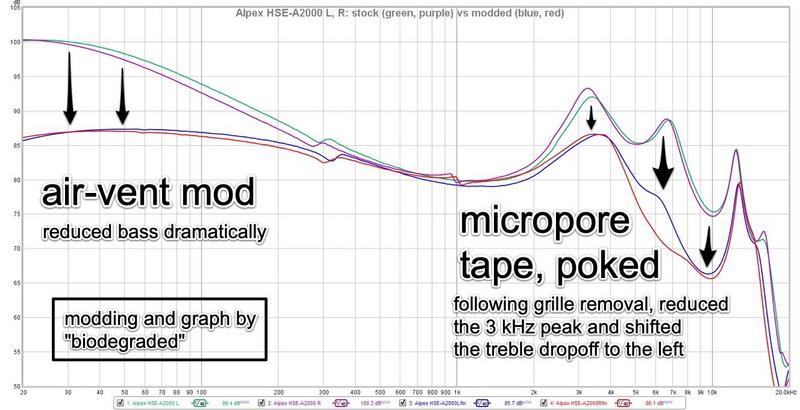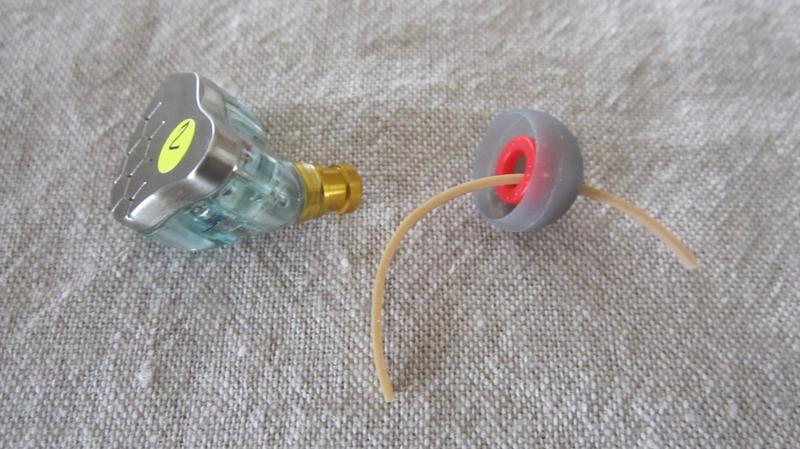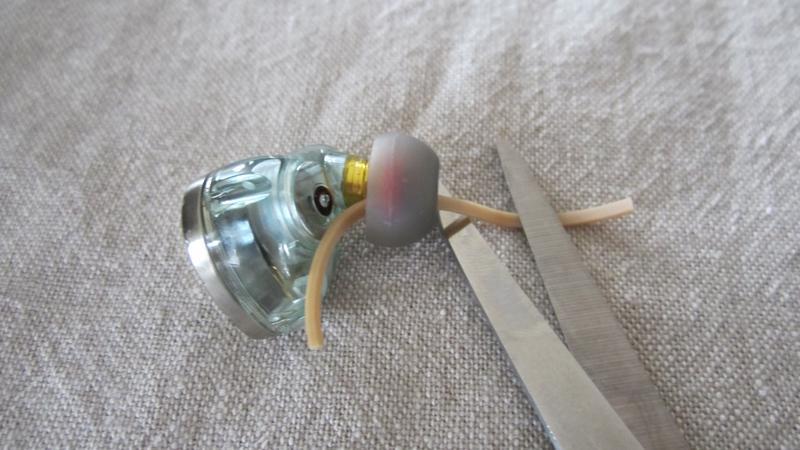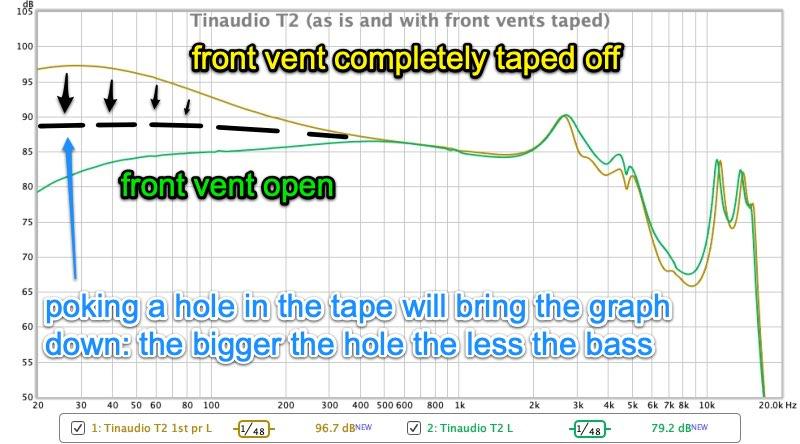
Reducing and Increasing Bass
How to Reduce Unwanted Bass Humps with the Air Vent Mod
THE MICROPORE METHOD
This is a twofold process and involves a bit of juggling between the two. Measuring comes in handy for double checking the results.
- Taping off the back vent. If bass is too weak now, poke a hole into the tape to dose bass quantity. As long the hole in the tape is smaller than the original vent opening, the bass will be removed.
- Creating an air-vent (or aid duct) in the front between tip and nozzle: this easy process is described over there. If you prefer a quickie, follow these pictures…
Tip: It is easiest to start with an earphone without a back vent because it eliminates step 1.
The combination of back-mod and front mod yields the largest amount of bass attenuation and results in a significantly more balanced signature than stock. If there is no back vent, one can obviously only do the air ducting. And that’s how it goes:


Tip: The degree of bass reduction depends on the number of windings…more windings mean a bigger gap between tip and nozzle, and therefore more airflow and less bass. Some reported 10-11 windings but I did with 5-6 in the past.
Unfortunately, you will never be able to speed up the bass, that is making it less muddy…but, of course, the muddiness will appear less irritating with reduced bass quantity after modding.
Below an example of a successful mod.

Tip: I always make my micropore tubes rather thick, then flatten them — and if they are too broad to fit through the rubber tip, I trim them with scissors into a small wedge.
The AudioFool recommends this non-reversible option: an air escape can be produced by flipping the tip inside out and taking a hot needle to puncture just the inner layer of the tip. That way no tape to shift which can lead to variability. Also, needle size can be used to control amount of venting.

THE “GUMMIRINGERL” (ELASCTICS) METHOD
(German, Viennese slang: “Gummiringerl”…little rubber ring, elastic; name coined by SBAF james444).
The air-vent mod can also be performed with rubber string/elastic/any other string: pull through between tip and nozzle, then cut the ends off. You can try string of varying thickness. The downside is lack of flexibility in fine tuning, but you don’t have to worry about channel balance and it probably lasts longer. And it is faster and easier.



How to Increase Bass
Tape off front vent for maximum effect. If you would like to scale it down, poke a small hole. The bigger the hole, the lesser the bass. Measure channel balance after each step, or do it sonically using a sine wave (Online Tone Generator).

Example: The Tinaudio T2s’ bass can be maximized by taping the front vent over. The bass quantity can be scaled back by poking a hole into the tape.
Tip: The bass response can be dosed by partially closing the vents…first close the vents with tape and then poke a hole to lessen the effect.

How to Add Bass Extension
That’s hit and miss and varies from earphone to earphone. The idea is to reduce the air flow in the back vent. It is a byproduct of reducing bass by reducing the size of the back vent by taping and poking as described above.

Reference
The principles were published by James444. You find the original posts under “Published Mods“.



